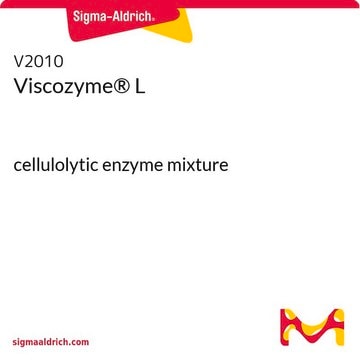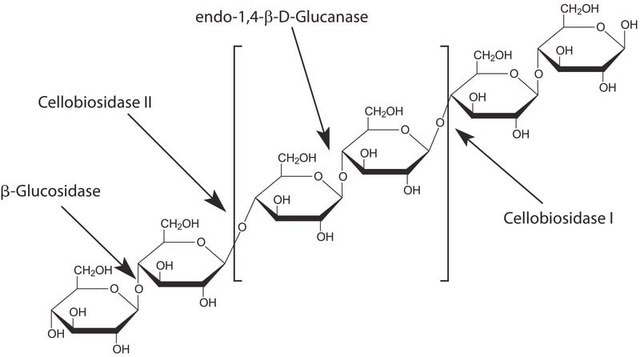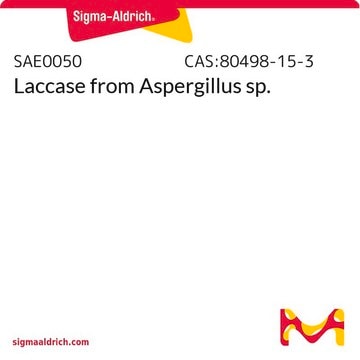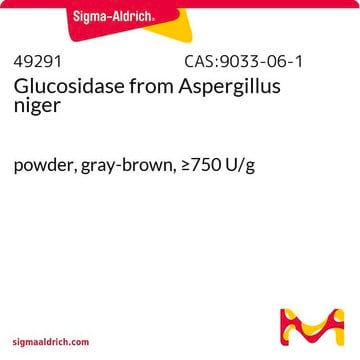C2730
Cellulase from Trichoderma reesei
aqueous solution, ≥700 units/g
Synonyme(s) :
Celluclast 1.5L®
About This Item
Produits recommandés
Source biologique
fungus (Trichoderma reesei)
Forme
aqueous solution
Activité spécifique
≥700 units/g
Poids mol.
68 kDa
Caractéristiques du produit alternatif plus écologique
Waste Prevention
Design for Energy Efficiency
Learn more about the Principles of Green Chemistry.
sustainability
Greener Alternative Product
Densité
1.10-1.30 g/mL
Autre catégorie plus écologique
Température de stockage
2-8°C
Vous recherchez des produits similaires ? Visite Guide de comparaison des produits
Catégories apparentées
Description générale
Cellulase from Trichoderma reesei is produced by submerged fermentation of a selected strain of the fungus Trichoderma reesei and catalyzes the breakdown of cellulose into glucose, cellobiose, and higher glucose polymers. It corresponds to a molecular mass of 68 kDa with optimum pH and temperature of 6 and 52° C, respectively.
Application
- for aqueous extraction of oil from corn germ
- in the enzymatic hydrolysis of Sweet Sorghum Bagasse (SSB)
- in the enzymatic digestion of paper grids
Actions biochimiques/physiologiques
Informations légales
Mention d'avertissement
Danger
Mentions de danger
Conseils de prudence
Classification des risques
Resp. Sens. 1
Code de la classe de stockage
10 - Combustible liquids
Classe de danger pour l'eau (WGK)
WGK 1
Point d'éclair (°F)
Not applicable
Point d'éclair (°C)
Not applicable
Équipement de protection individuelle
dust mask type N95 (US), Eyeshields, Faceshields, Gloves
Certificats d'analyse (COA)
Recherchez un Certificats d'analyse (COA) en saisissant le numéro de lot du produit. Les numéros de lot figurent sur l'étiquette du produit après les mots "Lot" ou "Batch".
Déjà en possession de ce produit ?
Retrouvez la documentation relative aux produits que vous avez récemment achetés dans la Bibliothèque de documents.
Les clients ont également consulté
Notre équipe de scientifiques dispose d'une expérience dans tous les secteurs de la recherche, notamment en sciences de la vie, science des matériaux, synthèse chimique, chromatographie, analyse et dans de nombreux autres domaines..
Contacter notre Service technique










